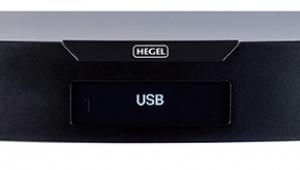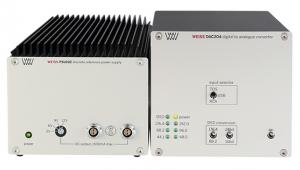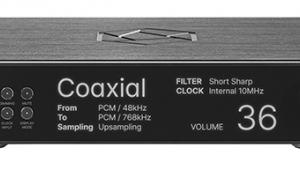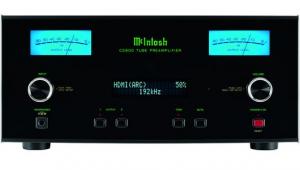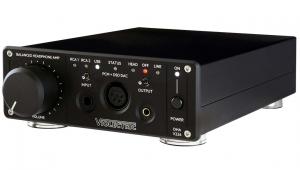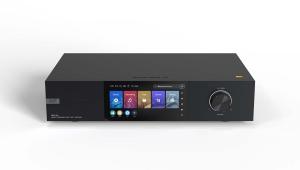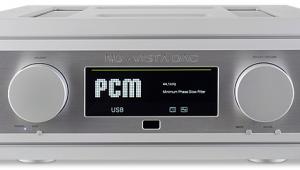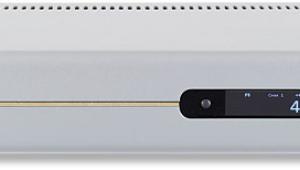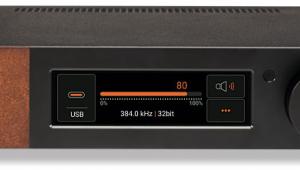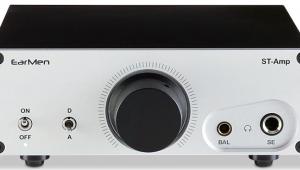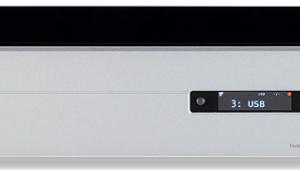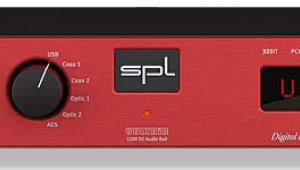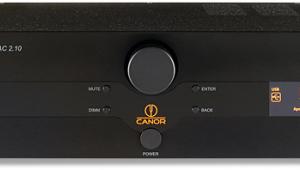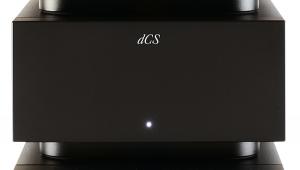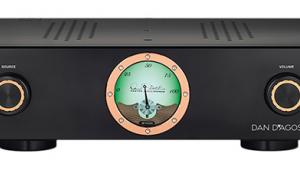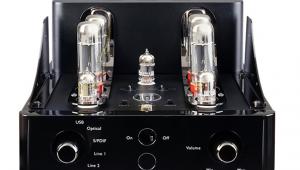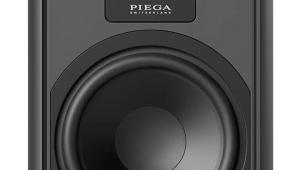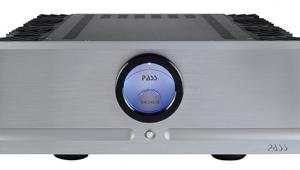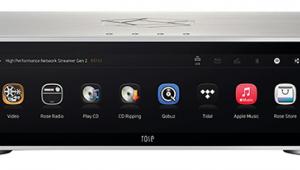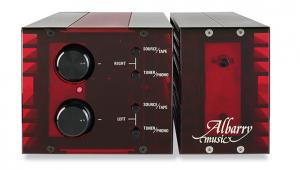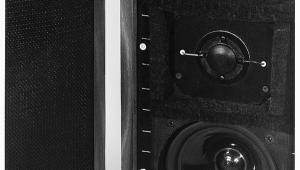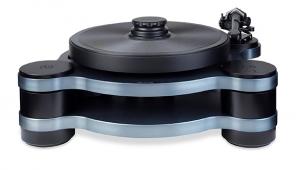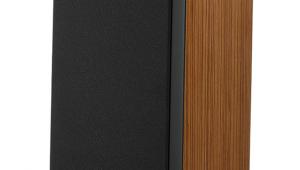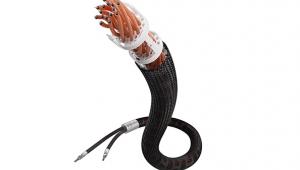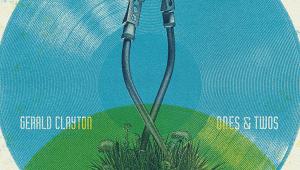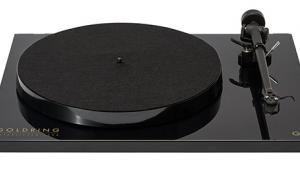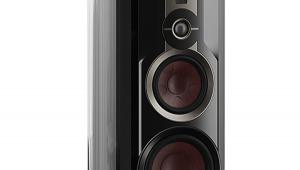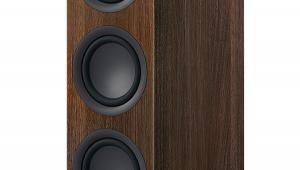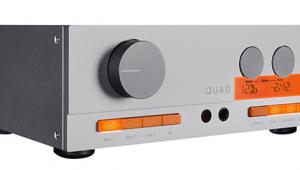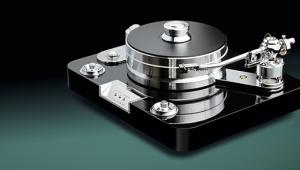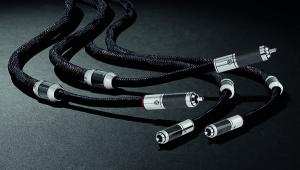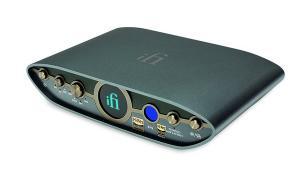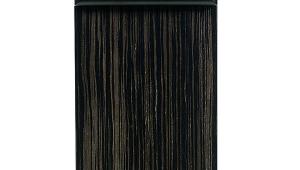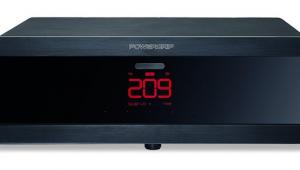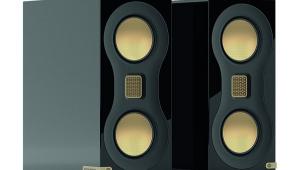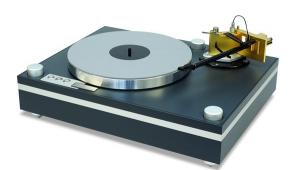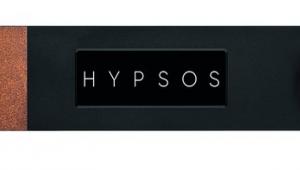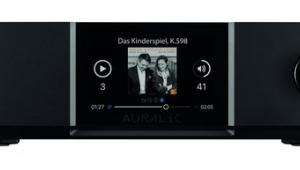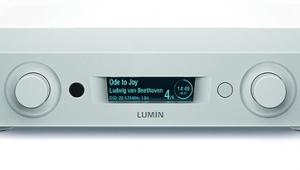FiiO K17 DAC/headphone amp
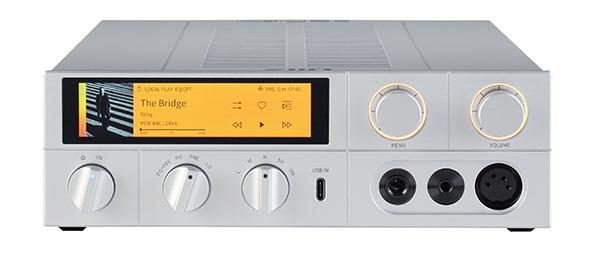

Underestimate the new generation of Chinese hi-fi manufacturers at your peril, because we’ve come a long way from cheap knockoffs of famous products, inexpensive music players and the like. Just as in the electric car industry, where Chinese companies are showing they have the skills and technology to match the very best, so it is in hi-fi, where brands including Eversolo [HFN May ’25] and FiiO – whose latest product, the £829 K17, we have here – are proving they can develop and innovate.
Based in Shenzhen, Guangzhou, FiiO has gone from making neat digital music players [see boxout], to offering a staggeringly huge ‘you want it, we probably make it’ audio range, from desktop DACs and amps to a selection of personal cassette players. And then there’s the K17, a flagship DAC/player/preamp/headphone amp of impressive flexibility.
Hi-fi in miniature
Available in either silver or black anodised finishes, the K17 is equally at home beside the computer, feeding headphones and active loudspeakers, as it would be on your hi-fi equipment rack. It offers both analogue and digital inputs, connections for a computer and wired/Wi-Fi networking, plus fixed and variable analogue outputs. There are feeds for both balanced and unbalanced headphones, the former on 4.4mm and four-pin XLR sockets, the latter through a standard 6.35mm connection.
Yet all this versatility isn’t the K17’s sole claim to desirability. You see, it may be compact, at just under 24.5cm wide, a bit over 21cm deep and slender at 6.7cm high, but it looks and feels substantial when you unpack it. As is suggested by the outward impression of the solid, high-quality aluminium alloy casework – and the chunky, precise controls that give it a ‘technical’ look and feel – the K17 is no toy. It’s very ‘real hi-fi’ in miniature. Even the packaging plays its part, down to a Quick Start Guide with classy silver cover printing, and an accessories box including mains and USB cables, a remote handset [see below], and a 6.35mm-3.5mm adapter for the unbalanced headphone output.
It’s pleasing on the eye, too, with a fascia combining those physical controls with a small display panel. This is a touchscreen type that you can swipe to access the various inputs or dig deep into the K17’s menus. Alternatively, one of the two rotary controls to its right offers twist and tap access for the inputs and menus, the other controlling volume as well as blanking or waking the display at a push.
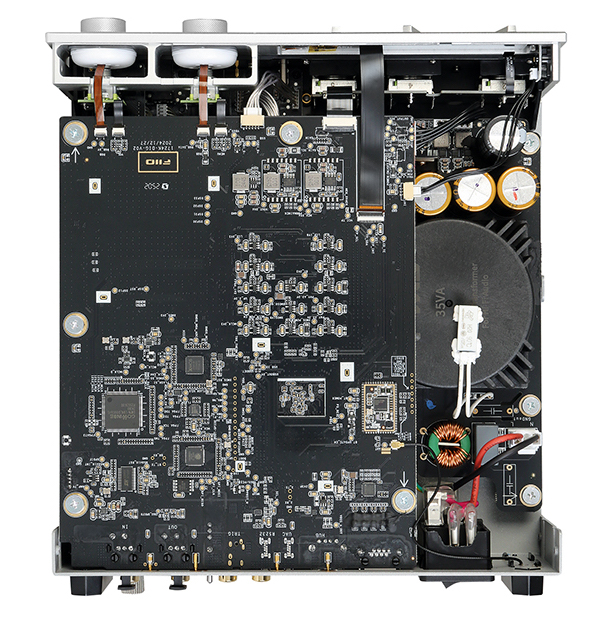
Beneath the screen are a trio of ‘old school’, but reassuringly solid, selectors for on/standby, another to switch between different pre/line output configurations, and a third to access the K17’s five-step headphone gain. FiiO rates its Super High and Ultra High options, designed for power-hungry cans, at +12dB and +15dB, respectively [see PM's Lab Report].
Pick a port
All these controls reflect a pretty crammed rear panel, bookended by antennae for Wi-Fi and Bluetooth (aptX HD/Adaptive). Optical and coaxial digital in/outs are joined by RCA analogue in/outs, a 4.4mm Pentaconn stereo analogue input, and balanced XLR analogue outs. There are also RS232 and 12V trigger sockets for system integration, plus USB-C (with another on the front panel) and USB-A ports.
The K17’s Ethernet port handles control, AirPlay and Roon Ready connectivity, but this isn’t quite the fully-fledged network streamer. It will play music from attached USB storage, or can be played to via AirPlay or as a Roon endpoint, but what the K17 won’t do is directly access network storage or online services – for that you’ll need a proper network player. At the moment, FiiO is backing AirPlay and Roon as streaming solutions, as in its K11 player, yours for just £99, and designed to feed a DAC via USB.
The internal construction of the K17 uses individual boards for the various sections of the unit, with a shielded, ‘low-noise’ linear power supply feeding separately regulated rails for the control, digital and analogue circuits. The digital-to-analogue stage is based on AKM technology, using an AK4191 upsampler to feed two AK4499EX DACs while, for the analogue inputs, an ESS ES9821Q ADC is pressed into service.
At the heart of the K17 is a high-speed 360MHz DSP chip which allows FiiO’s unit to offer a range of customisation options, including a 31-band parametric equaliser to tailor its sound to your preference. This equaliser is set up using the FiiO Control app, which is not as slick as some more comprehensive rivals, but does what it does clearly and simply.
The DSP also handles the amplifier’s output protection to avoid damage to connected components – as PM discovered in his lab testing, the K17 packs plenty of power from its Class AB headphone amp, but also cuts back extremely sharply when it reaches its limits. That needn’t worry any users as experience shows the K17 will drive just about any headphone load with ease. It also functions well as both a DAC and a preamplifier, although for the cleanest sound it proved best to run the headphone outputs and rear XLR output at their maximum settings.
![]() Carrying the cans
Carrying the cans
With so much capability and flexibility on offer, testing the K17 proved almost as exhausting as it was exhaustive. I used it fed from a Mac mini computer and a Naim network player, connected to USB storage, and employed as a Roon endpoint. Speakers included my resident PMC floorstanders while headphones numbered Bowers & Wilkins’ P9 Signature [HFN Mar ’17] and Oppo’s still-excellent planar magnetic PM-1 [HFN Jul ’14]. And whether with powerful opera passages through ’phones or bringing out the detail of a simple solo piano recording when used purely as a DAC, FiiO’s compact unit delivered quite startling levels of performance, way beyond what might be expected of a product at this price.
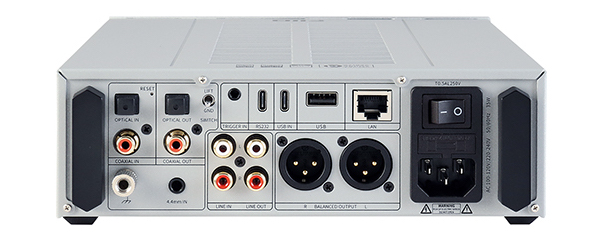
Playing the opening of the Gardner/Norwegian National Opera recording of Wagner’s Der Fliegende Holländer [Decca 4870952], the K17 leaned powerfully into the storm-tossed overture, before adopting a lighter touch with the radiant singing once the action got underway. This is a live recording, taken from concert performances at the Oslo Opera House, but it was never lacking in drama or emotion in the hands of FiiO’s DAC/amp.
Family affair
This ability to delve deep into the tonality of instruments and voices, and bring out a near-palpable sense of a performance, was also much in evidence with the recent Sheku Kanneh-Mason recording of cello works by Shostakovich and Britten [Decca 96kHz/24-bit download]. The British cellist takes a romantic approach to Shostakovich’s Cello Concerto No. 2 in G minor, accompanied by the Sinfonia of London under John Wilson, but even more striking are the two cello sonatas. Playing with the accompaniment of his sister Isata, and recorded in the atmospheric ambience of Snape Maltings, Kanneh-Mason conjures a sound of wonderful intimacy, which was deliciously resolved by the K17.
But you don’t need only demonstration-quality recordings to hear this FiiO unit doing its thing. With the big, bold sound of Bananarama’s 2024-recorded Glorious: Live In London set [In-Synk 48kHz/24-bit download], the exuberance of the performances and the enthusiasm of the crowd was immediately obvious, and the closing medley of ‘You Spin Me Round’ and ‘Venus’ was joyful.
All kinds of content were carried through the K17 during my listening sessions, and one of the more unusual pieces was a BBC Artworks programme on the life and work of audio guru Ray Dolby, presented in binaural sound [available on BBC Sounds at www.bbc.co.uk/sounds/play/m002bswq]. Heard through the open and detailed-sounding Oppo PM-1 headphones, it proved as immersive and tactile as it was fascinating. Incidentally, surround sound aficionados can also find it in Dolby Atmos [www.bbc.co.uk/sounds/play/p0l7cz8j] – if you want to listen to Dolby in Dolby.
Master communicator
With some more live recordings, from Keith Jarrett’s Bordeaux Concert [ECM 2740] to Bill Nelson with his Gentlemen Rocketeers’ Live At Metropolis Studios, London [Salvo SALVOSVX001], the K17 proved more than capable of delivering the atmosphere and scale of the event. At the same time, it easily kept the concentration of the listener, whether clamped into a pair of headphones or sat in front of a pair of speakers. Jarrett’s piano was crisp yet resonant, and so expressive, while Nelson’s guitar stabbed and snarled at one moment, driven on by the bass and drums, then sung and soared as his playing evoked windswept landscapes.
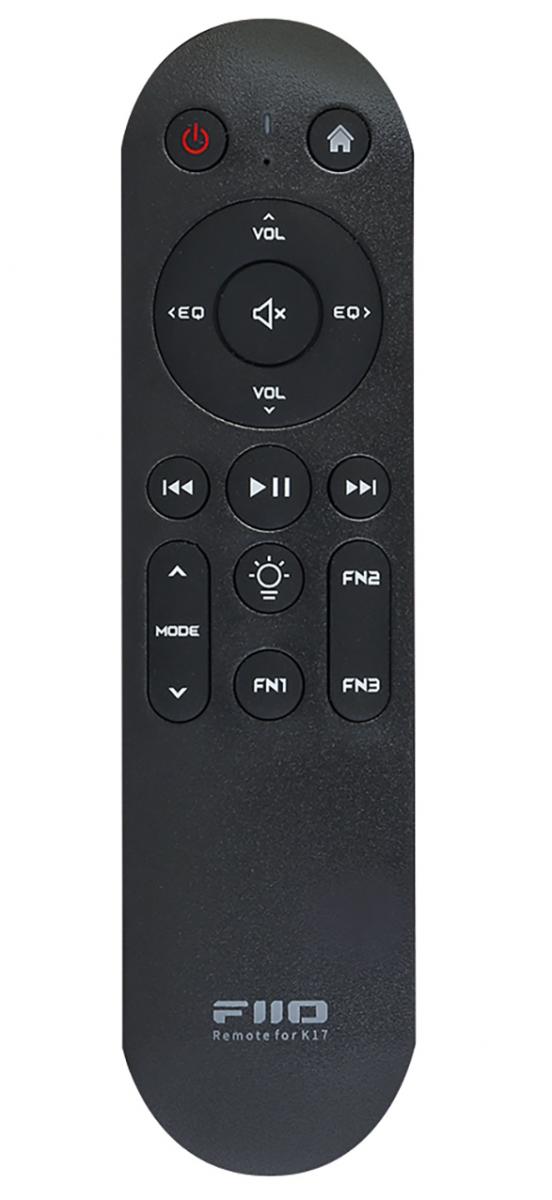
It’s a matter of communication, the K17 making light work of not just driving headphones but controlling them so that even closed-back designs sound light and airy, and open-back models all but disappear. There was never any sense that listening via headphones was any kind of compromise, or playing second fiddle to the experience via loudspeakers. That FiiO’s K17 does all this without digital fakery or obscure processing is all the more impressive.
Value added
Yes, it’s not perfect. That display, while crisp and colourful, is a bit small, so when it comes to delving deep into the settings you have to hope you’re pressing the right virtual button. But at least these things are ‘set and forget’. That minor quibble aside, the K17 is a remarkable piece of hi-fi for the money, and worthy of very, very serious consideration.
Hi-Fi News Verdict
The striking versatility of FiiO’s K17 is impressive. That it does it all for very sensible money (at least in high-end terms) makes it a real stand-out product, whether bought as a well-connected DAC, an excellent headphone amp, or a system hub to feed some active speakers. The term ‘small wonder’ could have been invented for products such as this. From user appeal to price to performance, the FiiO K17 is a triumph.
Sound Quality: 88%
